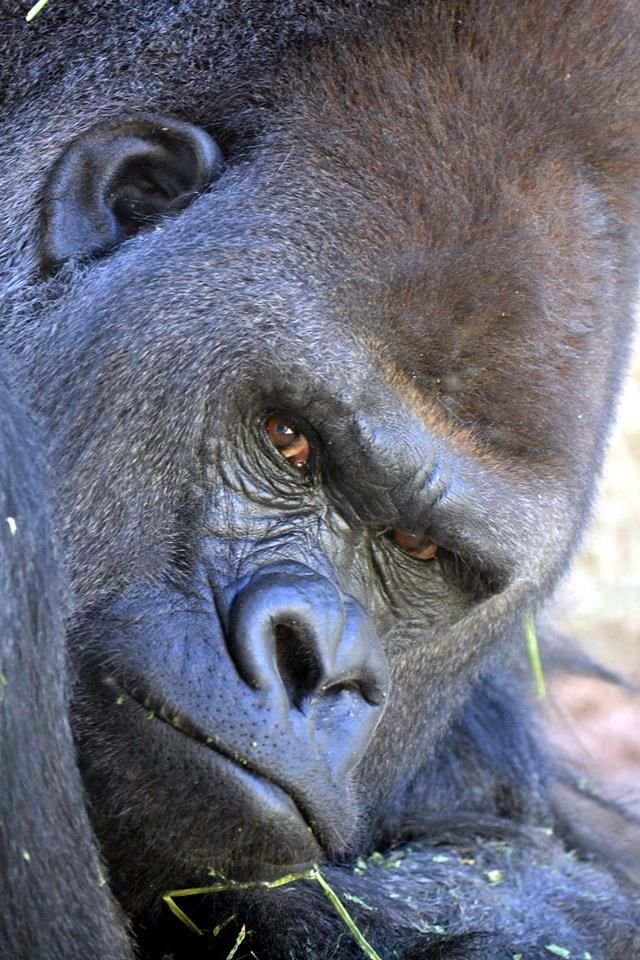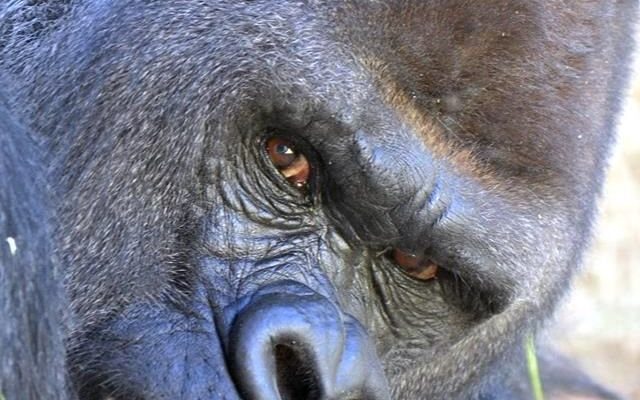
Let’s break it down into clear, manageable steps, almost like following a recipe. Just as you wouldn’t rush preparing a dish, you shouldn’t rush your response around these majestic animals. Understanding these gentle giants and knowing how to behave around them can help ensure both your safety and theirs.
Know the Western Gorilla: A Gentle Giant
When thinking about gorillas, it’s easy to get lost in their sheer size. The Western gorilla is the smaller of the two gorilla species, yet they are still incredibly strong. These animals can weigh up to 400 pounds! They live primarily in the rainforests of Central Africa and are known for their peaceful nature. However, just like a big dog can look intimidating, gorillas can seem fierce but are usually quite gentle.
Understanding their behavior is key. Gorillas typically spend their days foraging for food, playing with each other, and resting. They’re social animals that live in groups called troops, which are led by a dominant male known as a silverback. If you encounter a gorilla, you might notice it’s not just standing there—it’s likely doing something interesting, like grooming a buddy or munching on leaves. This context can help calm your nerves.
Stay Calm and Assess the Situation
If you spot a Western gorilla, the first thing to do is stay calm. Your heart might race, but panicking won’t help. Take a deep breath. Remember that the gorilla is more likely to be curious about you than to pose a threat.
As you assess the situation, try to understand what the gorilla is doing. Is it alone or with others? Are there any young gorillas nearby? The presence of infants can signal that the adult may be protective. If you encounter a troop, it’s best to keep your distance. Observe from afar but don’t draw attention to yourself.
Consider your surroundings, too. Are you near dense vegetation where the gorilla could easily retreat? Understanding your environment can give you clues on how the gorilla might react.
Keep Your Distance
If you’ve read anything about gorillas, you’ve probably heard the saying, “Respect their space.” Western gorillas are wild animals, after all. Keeping a distance of at least 25 feet is advisable. This is not just for your safety; it’s also to respect their territory.
If the gorilla approaches you or seems curious, don’t make any sudden movements. Slow down and stay still. Ducks and rabbits freeze when they sense danger—think of yourself like that. Let the gorilla decide whether it wants to continue investigating you. In many cases, they’ll sniff around and then lose interest, going back to their business.
Remember, a calm demeanor can often influence their behavior. If you stay composed, it may ease their curiosity.
Do Not Make Direct Eye Contact
While it might feel natural to want to lock eyes with such a magnificent creature, it’s essential to avoid making direct eye contact with a Western gorilla. In gorilla language, this can come across as a challenge or a sign of aggression. Instead, try to look at the gorilla’s body and surroundings.
Imagine if someone stared at you intensely; it would probably make you uncomfortable! By not making eye contact, you’re showing the gorilla that you’re not a threat. It’s like when you meet a new friend: you don’t want to come off too strong.
Instead, focus on your surroundings and keep the gorilla in your peripheral vision. This way, you can still enjoy the experience while being respectful.
Do Not Run or Make Sudden Movements
If a gorilla approaches you, you might feel the urge to run. Resist that impulse! Running can trigger a chase instinct in animals, including gorillas. Plus, their speed and strength far outmatch ours.
Instead, if the gorilla gets closer than you’d like, simply stay still and quiet. Just like a deer might freeze when it senses danger, you want to give the gorilla space to decide what to do next. Sometimes they might approach out of curiosity, and other times they may just walk by you entirely.
Picture it this way: when a toddler sees something fascinating, they might get excited and run towards it. But if you hold your ground and show that you’re not a threat, they often calm down and may even forget about you.
Understand the Role of Guides and Rangers
If you’re in an area known for gorillas, it’s a good idea to have a guide with you. Guides are trained to interact with wildlife and understand gorilla behavior better than most tourists. They can offer insights in real-time and help you feel more at ease.
These experts know how to read a situation and can advise on how to proceed. If a gorilla approaches, they’ll help you decide whether to stay put or move away. They’re like a GPS for wild encounters—providing direction and keeping your experience safe and informative.
Also, don’t forget that these guides have established relationships with the animals. Their calmness can help put you at ease, too.
What Happens If the Situation Escalates?
Let’s be honest: while most encounters with Western gorillas are peaceful, there’s always a possibility that things could escalate. If a gorilla charges or displays aggressive behavior—like pounding its chest or vocalizing loudly— it’s essential to remain calm.
Stand your ground but avoid any sudden movements. If you’re with a guide, follow their lead. They may instruct you to back away slowly while avoiding eye contact.
In rare cases, gorillas might charge as a warning, not necessarily to attack. This is their way of asserting dominance or trying to scare off perceived threats. By not reacting with fear, you’re showing that you’re not a threat.
Closing Thoughts
Encountering a Western gorilla in the wild is an unforgettable experience that can be both exhilarating and nerve-wracking. Understanding how to act in their presence is crucial for your safety and theirs. Remember to stay calm, keep your distance, and respect their space.
It’s like navigating a beautiful yet wild dance. Each step you take makes a difference, and with the right approach, you can enjoy the beauty of these gentle giants without disrupting their lives. So, if you ever find yourself face-to-face with one, take a deep breath, follow these guidelines, and savor the moment.

